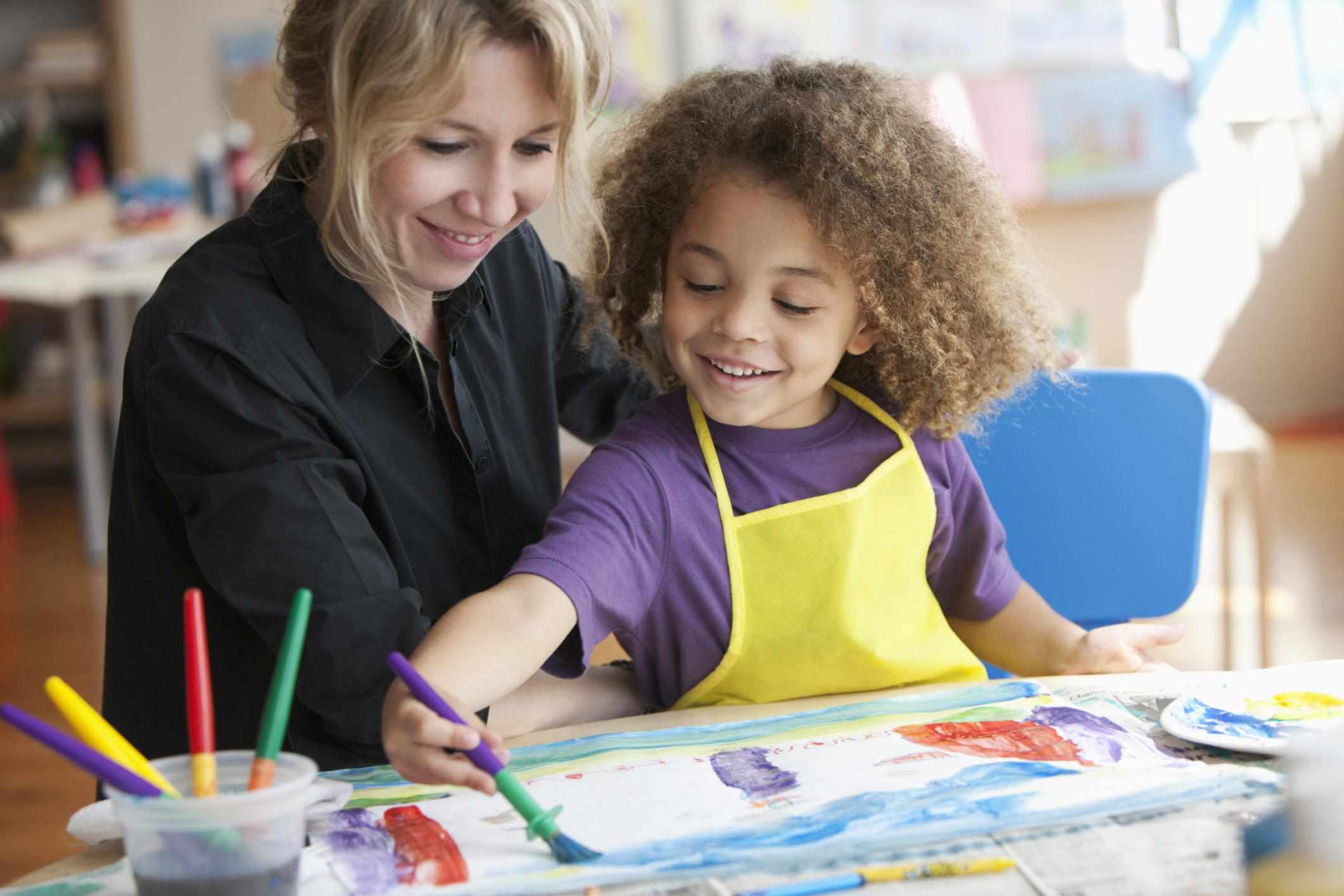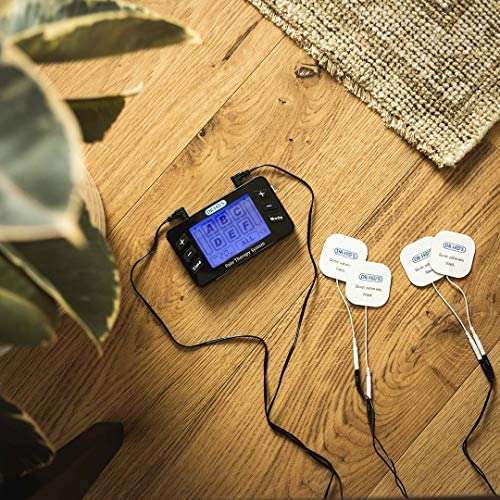By Clara Keane | May 11, 2017 | Children | Education
BACK TO THE MAIN BLOG

During the month of May, starting with the kickoff event on National Children’s Mental Health Awareness Day with the Substance Abuse and Mental Health Services Administration (SAMHSA), the AATA is highlighting topics related to children’s mental health in Art Therapy Today. Children benefit from art therapy in a variety of ways: for example, children with autism often find art a viable way to communicate; children with attention deficit disorders show improved ability to focus; children in cancer wards are soothed by art therapy. The list goes on and on.
 However, art therapy is not only beneficial to children with special needs. One way to make art therapy accessible to every child is to bring it to the schools. An AATA staff member took the opportunity to interview an expert in the setting of school-based art therapy, both in the classroom and in program design, to discuss how children can use art therapy to reconcile and process the chaos of both the outside world and their internal selves.
However, art therapy is not only beneficial to children with special needs. One way to make art therapy accessible to every child is to bring it to the schools. An AATA staff member took the opportunity to interview an expert in the setting of school-based art therapy, both in the classroom and in program design, to discuss how children can use art therapy to reconcile and process the chaos of both the outside world and their internal selves.
Marygrace Berberian, LCAT, ATR-BC, LCSW is a Clinical Assistant Professor with the Graduate Art Therapy Program and Director of the NYU Art Therapy in Schools Program at New York University. Marygrace has established school based art therapy initiatives throughout New York City for at-risk children and families for almost 20 years. Currently, Marygrace is leading the advocacy efforts for the inclusion of creative arts therapies in public schools in New York State and is a doctoral student in Creative Arts Therapies at Drexel University. We asked Marygrace four questions about her work with children in the school setting. This is what she said:
Q1: How do school-based art therapy programs in public schools benefit the community?
A1: When a student struggles cognitively, emotionally, or behaviorally, schools are often the first to identify symptoms and are then charged to deliver intervention. Accessing mental health services is often too daunting and cost prohibitive for overwhelmed, at-risk families. School facilities are more often becoming the sole providers of mental health support.
Art Therapy services in schools have effectively responded to the diverse and ever changing needs of students. Students have been aided by the capacity of art making to restore healthy functioning and provide mastery amidst feelings of helplessness. Art therapy presents an effective means to address these issues since students are offered an outlet to channel their anxiety and aggression into the art making process. The symbolic images that are generated allow students a capacity to express feelings and ideas regarding psychological conflicts and life experiences that are too emotionally loaded for verbal communication. When these issues are explored in the initial phase of treatment, there are usually more critical issues underlying the manifestations being observed in the school environment. Students are often discovered silently struggling with anxiety, depression, social difficulties and low self-esteem. Art helps students organize the chaos of their internal worlds and their often less than favorable realities.
As the students are a “captive” audience, treatment can be consistent and long term. Further, the art therapist can serve as the bridge between parents and teachers, fostering a more comprehensive and inclusive perspective on progress and the existing impediments. The seamless integration of art therapy services with other school services supports the students, teachers, and families to overcome obstacles and restore functioning.



Q2: How do images help children understand and communicate their experience of the world around them?
A2: Creating art promotes sequential reasoning and organization of thought for those faced with overwhelming feelings but lacking the coping mechanisms to properly process them. This can be incredibly burdensome for children. I vividly recall my observations of children after the events of 9/11. Art was often the only way children could make sense of the insensible. Art can serve as a way to map pictorially that which cannot be examined verbally. Order can be visually established in the midst of psychological chaos. Art making aids in affect regulation and can transform a child in distress into an engaged artist. More recently, children are trying to understand the division in their classes and families. Loyalties are being questioned and anxieties are triggered amidst that uncertainty. Notably, more discussions in sessions echo themes of “us” versus “them”. The identity of the enemy “them” is interchangeable to whoever threatens their sense of safety. More children are hyperaroused and vigilant to protect their own vulnerabilities.
Q3: Given the current political climate, how can art help children communicate their anxieties to adults?
A3: Concretizing internalized feelings through art production can become a starting point for discussion and provide a visual record for further discussion. It is important for adults to empathetically respond to the child’s anxieties as evident in their narratives and images. Creating a safe and contained space (both visually and dynamically) will usher more authentic expression. A simple bordered paper gives the paper some visual containment. For older children, polarity drawings often help to highlight differences and similarities in opposing perspectives.


Q4: How can art therapy help develop empathy and possibly limit bullying in the school system?
A4: Art, in its continuum from more controlled to less controlled expression, can allow for experimenting in ways to cope with adversity. In the safe confines of the treatment relationship and through non-verbal expression, children can rehearse alternative paradigms of relatedness. The empowering quality of the non-verbal, creative process, a key underpinning of our work as art therapy professionals, enables clients to “visually speak” their expression, thereby mediating and containing their internalized struggles. Often, the bullied child creates scenes where he is a fiercely courageous superhero. The fantasy of overcoming adversity is first visualized and rehearsed in art therapy so that it can become more of a reality.
School-based art therapy is also a rich arena to promote “critical consciousness” as postulated by Paolo Freire (2005). In art therapy, students can reflect deeply about themselves in relation to their social climate, explore inherent contradictions in those relationships and become empowered to problem solve. The awareness, empowerment and accountability of Freire’s work in the context of oppression is quite relevant to our current work as art therapists.
In conclusion, art provides children a way to communicate thoughts or feelings that may seem too dangerous or too complex to spell out with words. The presence of art therapy services in one of the most familiar settings for children— the school— can promote safety in times of uncertainty, trauma, or conflict. School-based art therapy programs align directly with the AATA’s Vision of a world where “the services of licensed, culturally proficient art therapists are available to all individuals, families, and communities.” To view more images created by children in schools, visit our digital exhibition, “I am a work of art,” which celebrates the important role of art and creativity in mental health, wellness, and social-emotional well-being for our children, youth, and young adults.
Images were obtained with permissions, courtesy of the NYU Art Therapy in Schools Program.
References
Freire, P. (2005). Education for Critical Consciousness. New York: Continuum International Publishing Group.
 A recent artwork created by 13-year-old student Erikah during virtual art therapy sessions offered by their school IS 238 in Queens, New York.
A recent artwork created by 13-year-old student Erikah during virtual art therapy sessions offered by their school IS 238 in Queens, New York.
Credit:
Erikah
Thirteen-year-old Erikah didn’t like turning on their computer camera and talking during remote math class this last year. They missed being able to raise their hand to call the teacher over if they need to ask for help, and found it hard to focus on classwork in their apartment.
Like many other middle schoolers, Erikah found remote learning to be a frustrating and isolating experience.
But there’s one class they look forward to, even though it’s also beamed over the internet. Every week after regular classes are over for the day, Erikah joins a group of students from the school online to create art with “Miss Keller,” Erikah’s favorite teacher.
Stephanie Keller is a licensed creative arts therapist for Counseling in Schools. Since last March, Keller has met with a group of middle school students from Intermediate School 238 in Queens, New York for virtual art therapy sessions.
Art therapy uses drawing, painting and other art-based practices “as a way to connect, and to develop a therapeutic relationship,” said Keller. Not only does it allow students to express emotions, it provides behavioral support and stress management, she said.
To Erikah, the program is a must. “Art therapy is an amazing thing and I think every kid should do it,” they said. “If you have problems like focusing or with anger issues like me, it really calms you down.”
Now, if Erikah gets frustrated during class or while working on an assignment, they pull out one of the drawings from their sessions or just start drawing to help focus.
Erikah describes their art journal as very colorful and random: “It mainly reflects my personality and how I feel sometimes.” Erikah loves to use paint and clay, and sometimes uses makeup as an art medium. One of Erikah’s recent pieces shows a girl in a teacup house as it rains outside. “She wants to go outside and play but she couldn’t because it’s raining,” they explained.
Keller usually starts each session — individual or group — with a prompt for the students. She will show them a series of paintings that reflect different emotions or feelings and ask students which image speaks to them that day. Students can point to an image of a tree waving in the wind or a huge wave crashing to share feelings of being overwhelmed. Students can then choose to talk about artwork they created outside the session or use the time to paint, sketch or draw.
Other times, Keller will give students a specific assignment. During a recent conversation about resilience, she asked students to draw or paint an image of something in nature that survives in a harsh environment. The art gives students a safe way to share with their art therapist difficult feelings or emotions without directly talking about them.
“We have these different prompts and ways to express ourselves and talk about different things that come up,” Keller said. “But we’re also focusing on things that are going on in school and things that have come up in the past. We’re addressing those things and doing it in creative ways.”
What really makes the program special for Erikah is the relationship with Keller. “She gives you really good advice, and it’s not always about art either,” they said. “Miss Keller, she gave [advice] outside of my mental health, school work, and I really liked that, because it has helped me during the pandemic.”
While research on school-based art therapy is sparse, Lauren Amigo, a licensed creative arts therapist who works with Counseling in Schools, said creative arts therapy in schools isn’t brand new — it’s been around for decades. According to UCLA’s Center for Mental Health in Schools, art therapy “opens up a nonverbal form of communication for those who have a hard time communicating their thoughts and feelings.” Some studies suggest that drawing while talking about distressing or traumatic experiences helps reduce children’s feelings of anxiety, anger and fear, and reveals information about the sources of the trauma. The American Art Therapy Association routinely updates a list of studies showing the effects of art therapy.
While many schools may not have had the capacity to focus on art during remote learning, advocates say art therapy can help students make sense of and cope with events of the past year.
Some schools are already integrating art therapy components into classrooms. Amigo spent the last year at the Brooklyn Community High School for Excellence & Equity, commonly known as Brooklyn X, working with Black, Asian, Latino, and Middle Eastern students, as well as students who had recently immigrated to the U.S. The school community not only dealt with the re-ignition of the Black Lives Matter movement after the murder of George Floyd and a rise in anti-Asian hate crimes, it was also was particularly hard hit by the pandemic, Amigo said. Art therapy was one way of helping students at the school cope.
She asked students to think about and create art based on two questions: “What do you see outside of your window now?” and then “What would you like to see out of your window?” In response to the first question, many students created pieces that showed destruction, often connected to racism; some “used bright colors of red, which symbolized the slaughtering of a lot of people that look like them.”
The work turned into a much larger project about resilience.
The school sent ceramic tiles to every student, both those attending in person and those still learning remotely. Students worked in groups to paint symbols of their personal resilience on their tiles. Once the students are all back to school in person, the tiles will be used to create a portable mosaic that will allow them to be “reminded of their strength in a more positive way,” Amigo said.
“The students who I work with and the students within the school have gone through so, so much loss,” Amigo said. “Their resilience wasn’t necessarily by choice. It’s something that’s come up in my dialogue with them, ‘Well we really had no choices here; we really had no other options’.”
Having a space where students can creatively process and express what they are going through with someone who is supporting them “is really powerful,” said Amigo. It can be especially helpful for younger children and adolescents who “are still in the process of learning how they feel, learning how they react and learning how they respond.”
What Amigo would like to see outside her own window is an art therapist in every school. “I am a huge proponent for art therapy for students of all ages,” Amigo said.
Editor’s note: This story led off this week’s Future of Learning newsletter, which is delivered free to subscribers’ inboxes every other Wednesday with trends and top stories about education innovation. Subscribe today!
This story about art therapy was produced by The Hechinger Report, a nonprofit, independent news organization focused on inequality and innovation in education. Sign up for Hechinger’s newsletter
The Hechinger Report provides in-depth, fact-based, unbiased reporting on education that is free to all readers. But that doesn’t mean it’s free to produce. Our work keeps educators and the public informed about pressing issues at schools and on campuses throughout the country. We tell the whole story, even when the details are inconvenient. Help us keep doing that.
Join us today.




